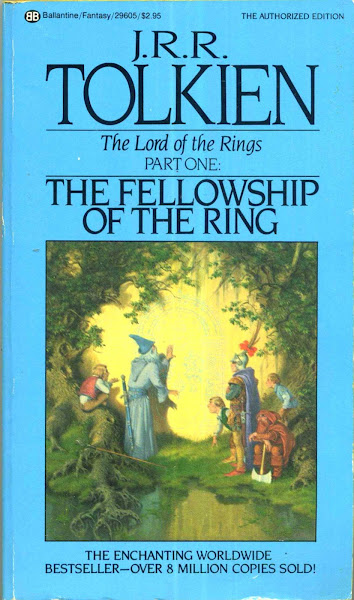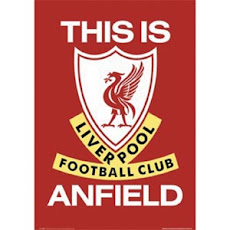 (I wrote this for www.ateneo.edu several years ago so it might be a little dated.)
(I wrote this for www.ateneo.edu several years ago so it might be a little dated.)
The Rise, Fall, and Resurrection of Jesuit Hoops
by rick olivaresHe’s a millionaire many times over. He’s an 11-time NBA All-Star. Not to mention one of the League’s 50 greatest players. Ever.
Yet the highlight of his career isn’t the 1984 NCAA Championship. Neither is it the 1984 Olympic Gold Medal nor the one won he won again nine years later as a member of the legendary Dream Team in Barcelona.
The highlight of his career, he says, falls on a bright and sunny May Day (two months removed from March Madness). One month from any appearance in the NBA Finals (which is always played in June). His personal highlight is Graduation Day. When Patrick Aloysius Ewing graduated from Georgetown University. And right on time just as he promised his mother.
Rev. Fr. Timothy Healy, S.J., President of Georgetown hails Ewing’s graduation as a great day in the school’s history for not only did the Big Fella put the Hoyas in prime time and the school on the map, but he proved to detractors that a poor and skinny immigrant kid from Jamaica could earn a place in a seemingly snobbish Jesuit school.
Ewing’s impact on G-town was huge because it brought back a resurgence of Jesuit basketball unheard of since the days of the Cooz in Holy Cross and Bill & KC at the University of San Francisco. His accomplishments prompted a skinny kid from Chesapeake, Virginia (who used to pin Ewing posters beside his bed) to matriculate in G-town. His name? Alonzo Mourning. He was soon followed by Dikembe Mutombo, Othella Harrington, and later on, Allen Iverson and Michael Sweetney.
Other Jesuit schools, though not as successful, provided some noise if not necessarily footnotes. Tiny Gonzaga University up in Spokane, Washington begat one of basketball’s greatest point guards ever in John Stockton. Loyola Marymount made the headlines with its near-miraculous run to the 1990 NCAA title after the on-court death of its star player Hank Gathers.
But after a dearth of play-off runs and championships in the dark ages of the 90s (doesn’t this sound familiar), Jesuits schools all across the United States have made another run, albeit this time more widespread, towards respectability and long-term athletic supremacy. Gonzaga, Xavier and St. Joseph’s have all nearly made the Final Four in Division 1 competition in the last few seasons, losing only by a whisker.
The resurgence of Jesuit hoops success isn’t limited only to continental USA. Even here in the Philippines, Jesuit-run schools have become once more a hotbed of some of the best ball played aside from making some of the most inspiring stories in the highly volatile and controversial world of sports.
Ateneo De Manila, after having its dreams of a basketball dynasty in the late 1980s curtailed by injuries, academics, and poor recruiting, is once more a basketball power. The Blue Eagles are once more one of college basketball’s elite teams. They made the UAAP Finals three straight years, winning its first title in 2002 after 14 years of frustration. Fr. Carmelo A. Caluag, S.J., the Blue Eagles’ former Chaplain says that with all the groundwork laid by the school and its boosters, the school will be competitive all the way until the end of the new millennium’s first decade.
What is it about Jesuits and basketball? James Naismith may have invented the game, but many a Jesuit priest or institution has staked their claim as some of the best minds or hotbeds in the game. Why is it that their institutions have once more made mainstream consciousness? Is there a secret to the success of Jesuit sports?
Textbook Triangle Offense
When Ignatius of Loyola offered his sword as a sign of fealty to the King of Heaven centuries ago, little did he know that the modern-day Jesuit would go about conquering the world with a Bible and textbook in one hand and a basketball in the other.
The Jesuit dictum of Ratio Studiorum advocates a three-pronged triangle offense of learning the right thing, the right way, at the right time. That has been amended over the years to include mens sana in corpore sano or a sound mind in a sound body for the Jesuits believe that one has to be excellent not just in the classroom but also in the gymnasium.
In the Ateneo De Manila, it is insisted that a liberal arts training for the mind be integrated with the development of the body. Something that is still vigorously enforced today. The esteemed late columnist Art Borjal once wrote in the Aegis that this can be distilled into the Greek word, arête. The Society’s theologians and educators believed that arête meant to simply exemplify versatility: the complete education of a whole man – “eloquent in the forum, sensitive to the poem, clear and sharp with the pen, courageous in the battlefield, and superior in athletics.”
Stateside, our brother Jesuit schools have created courses that are specifically sports-centered. Fr. Patrick Kelly, S.J. of the University of Detroit Mercy, teaches a course called “Sport and the Spiritual Life” and has been involved (since 1995) in a national conference for school administrators, athletic directors, coaches, and parents on “Sport, Spirituality, and Character Formation.” Fr. Kelly’s endeavors have greatly helped athletes earn their degrees as well as understanding their place in the world. Regis High School (New York) Theology Professor Fr. James DiGiacomo, S.J., himself a sports fan, has adapted Fr. Kelly’s teachings and believes that engaging in sports is essential to man’s human and spiritual development.
Lay workers like Mary Helen Walker, Women’s Basketball Coach at Loyola University in Chicago who won an MVP Award in basketball during her undergraduate years at Holy Cross, wholeheartedly embraces the development of the person as a whole. She actively preaches the motto of being men (and women) for others through coaching for the life experiences it offers through relationships.
The Jesuits have long preached that through athletic competition, virtues like justice, courage, and honesty are developed. Competition teaches them to focus on the goal at hand, to make sacrifices in the quest of that goal, and to overcome adversity through perseverance. Sports demands team play, discipline, and loyalty.
Glory Days
In 1924, the Ateneo De Manila’s Fr. John F. Hurley, S.J. and Fr. Henry B. McCullough, S.J. help found and organize the National Collegiate Athletic Association, patterned after the US NCAAs. But it wasn’t until 1928 that the Blue Eagles (the Eagle was chosen in fidelity to the noble and honored tradition of medieval chivalry) won its first collegiate crown by going undefeated.
Fr. James A. Martin, S.J., the Ateneo coach, utilized a revolutionary system called “shock troops” wherein he utilized his bench to the hilt. He would then guide Ateneo to two more runner-up finishes. Fr. Martin was later offered the head coaching job of the Philippine team in the 1930 Olympics, but he declined the honor. Fr. Matthew V. Kane, S.J. and Fr. Joseph M. Geib, S.J. took over from Fr. Martin and led Ateneo to three straight titles (something the school has never achieved since). The school would go on to win 10 more titles afterwards behind a virtual who’s who in local cagedom: Ambrosio Padilla, Luis “Moro” Lorenzo, Primitivo Martinez, Ed Ocampo, Francis Arnaiz, and Steve Watson to name a few.
 Across the ocean, the College of the Holy Cross in Worcester, Massachusetts, is still best known in trivia games as Boston Celtics’ great Bob Cousy’s alma mater. That the school won the 1947 NCAA Basketball title seems an after thought. Never mind that fellow Celtics star Tom Heinsohn also graduated from there years later. The school was so small (student population then: 2,400) that they didn’t even have a gym to call their own. Practices in fact, were held in an old barn.
Across the ocean, the College of the Holy Cross in Worcester, Massachusetts, is still best known in trivia games as Boston Celtics’ great Bob Cousy’s alma mater. That the school won the 1947 NCAA Basketball title seems an after thought. Never mind that fellow Celtics star Tom Heinsohn also graduated from there years later. The school was so small (student population then: 2,400) that they didn’t even have a gym to call their own. Practices in fact, were held in an old barn.
But in 1947, all things came together. Under Coach Alvin “Doggie” Julian, the Crusaders, with the cheers of “Choo Choo Rah Rah Fight Holy Cross” booming from the bleachers, beat the top-ranked Oklahoma Sooners 58-47 behind the dazzling duo of George Kaftan and Bob Cousy who ran their patented give-and-go game.

In 1955, the University of San Francisco, behind a gazelle with a mean streak named Bill Russell and granite of a guard named KC Jones defeated heavily-favored La Salle (Hmm. These guys seem to be everywhere. Go USF) 77-63. Tournament prognosticators pegged the Explorers to romp away with their second straight title on the strength of its awesome line-up led by All-American Tom Gola. Jones recalled that “the Dons were said to have a better chance of being struck by lightning on a sunny day than winning it all.” As it turned out, not only did the Dons wallop the defending champs but they won back-to-back titles (a 83-71 win over the Iowa Hawkeyes in 1956) and 55-straight games to become the first team to go undefeated in NCAA play.
In 1963, the Loyola University Ramblers of Illinois upset the two-time defending champs the Cincinnati Bearcats with a stunning come-from-behind overtime 60-58 upset win to wrest the title.
The Marquette Warriors, behind Butch Lee and Bo Ellis, beat a strong North Carolina team 67-59 that featured Walter Davis, Mike O’Koren and Phil Ford to wrap up Al Maguire’s tenure as coach for this Milwaukee-based Jesuit school.
Georgetown made three trips to the NCAA finals during the Patrick Ewing-era bringing Jesuit basketball to unprecedented heights in terms of exposure.
The Road to Calvary
The bonanza ratings of prestigious tournaments like the local UAAP and American NCAA and the infusion of millions and millions of Benjamin Franklins, has made college basketball vulnerable to the excess of big time sports. “Somewhere along the way, the purity of basketball, of competition, just faded away,” laments Fr. Raymond Holscher S.J., former Athletic Director of Ateneo.
The Jesuits stood pat on their refusal to match up with the bigger colleges and universities and their basketball programs soon paid the price by tumbling into hoops mediocrity. Schools across the globe named after Jesuit saints refused to buy into the ultra-competitive atmosphere that extolled winning at all costs. Many, including the Ateneo, asked if it was worth diluting the student body with mercenaries who were brought in to simply win and to whom studies seemed like an anathema. Any reference to Jesuit hoops dominance would come in the form of grainy black and white photographs or film of misty yester years with Billy Joel’s “A Time to Remember” as the soundtrack.
Whatever basketball glory soon faded. Past championships seemed nothing more than relics to be brought out during homecomings. Colleges and universities named after cities and philanthropists soon began running roughshod over the game as it degenerated into what Reverend William B. Neenan, S.J, Vice President of Boston College calls a modern-day Roman circus of beer and tailgate parties with athletes who believed that they were bigger than the game.
Crossing the Rubicon
 At the end of the late 1990s, Gonzaga began a stirring run towards the US NCAAs by making the Elite 8 several times. The excitement generated by this tiny school’s success in spite of having a paltry athletic budget (for the few varsity teams the school fields) got the campus of 4,500 really excited. The excitement was fever pitch that students decked the statue of famed Gonzaga alumnus Bing Crosby in a Bulldogs jersey with a sign that said, “Go Zags!” Some even joked about divine intervention. “It’s time we showed them how real basketball is played. It’s that Jesuit magic,” gushed one student during that memorable run. “It’s almost like God’s on our side.”
At the end of the late 1990s, Gonzaga began a stirring run towards the US NCAAs by making the Elite 8 several times. The excitement generated by this tiny school’s success in spite of having a paltry athletic budget (for the few varsity teams the school fields) got the campus of 4,500 really excited. The excitement was fever pitch that students decked the statue of famed Gonzaga alumnus Bing Crosby in a Bulldogs jersey with a sign that said, “Go Zags!” Some even joked about divine intervention. “It’s time we showed them how real basketball is played. It’s that Jesuit magic,” gushed one student during that memorable run. “It’s almost like God’s on our side.”
Gonzaga has none of the players that Sportscenter salivates over. Dan Dickau, currently of the Charlotte Bobcats, wouldn’t look out of place jamming with current garage rockers the Strokes. If you call a put back slam by the Bulldogs’ French import, Ronny Turiaf, worthy of a highlight shot, then you wonder maybe he’s getting airtime because he’s one of two French players on the team or because he plays with his hair braided into dreadlocks.
This small school (named after 16th century priest St. Aloysius Gonzaga, Patron Saint of the Youth) located some 275 miles from Seattle and established in 1887, had for years been financially strapped. But the success of the basketball program has done wonders for the school in general.
During the 2003-04 school year, a whopping total of 3,713 freshmen enrolled in Gonzaga. That’s more than double the 1997-98 (the year of the Bulldogs’ resurgence) numbers. The dorms have been full to bursting that the school had to rent out a nearby inn for the whole year just to house their students. And just to be sure that they could accommodate everyone, the school even purchased the local bowling alley if only to have the option of refurbishing it into a dorm should the need arise.
The basketball team’s success prompted university President Rev. Robert Spitzer and Coach Mark Few to seek athletic endowment by building a new arena that has been packed to the rafters. Matt Scheelar, a Gonzaga alum says that it’s rather ironic that it wasn’t too long ago that you could easily buy a ticket on game day and still have enough room to stretch your arms and legs. Nowadays, he adds, tickets are scarce and classrooms resemble a can of sardines.
The last couple of US National Players of the Year, Xavier’s (in Cincinnati) David West and St. Joseph’s (in Philadelphia and current Ateneo Blue Eagles Coach Norman Black’s alma mater) Jameer Nelson are throwbacks to an older time when athletes earned their diplomas first before earning a slot on a pro basketball team’s 12-man roster.
Coincidentally around the same time of Gonzaga’s inspiring turnaround, Fr. Bienvenido F. Nebres called for a meeting to give the Ateneo De Manila’s performance in UAAP competition a badly needed boost. After a lengthy planning session, an integrated sports program was put in place along with qualified coaches to spur the athletes on. The result has been nothing short of spectacular as the school has risen to 4th place in the general standings. “The inspired play of our basketball team and the championship in 2002 has done much to create excitement about the school and its various programs,” says current University Athletics Director Jose Capistrano. “And we’ve also had significant success in other sports like football, judo, fencing, and golf to name a few.”
Breaking Down the Game: X & Os
Boston College’s Rev. William B. Neenan, S.J. in his report on the current success of Jesuit schools, outlines four factors on why Jesuit schools have gone on the offensive in the college game:
To stimulate school spirit. Fr. Neenan writes that inter-collegiate sports help students cope with anxieties about college life when he feels the community bond as one during games. He cites an example of how a freshman felt that Boston College was finally “home” after experiencing the emotional highs of the Eagles crushing arch-rival Syracuse at the Conte Forum. This enables the student focus on the academic and extra-curricular activities that constitute a huge part of his college life.
To serve enrollment purposes. While attending a school can be a matter of family tradition, the presence of a high profile and winning sports program does attract many. Students and alumni take pride in being a part of a school that is recognized by their peers and this shows when they wear athletic apparel even outside the games even well into their post-college lives.
To promote alumni attachment. A successful sports program brings in alumni support that helps build the academic and athletic programs aside from the school’s physical structures. Gonzaga’s Fr. Spitzer and Coach Few were able to successfully lobby from alumni Phil and Tom McCarthey with some badly needed funds to put up a 6,000-seat arena (that is today known as the McCarthey Center). If the school was concerned that athletic fundraising would have a negative effect on the school’s relations with its alumni were unfounded. With a positive cash flow for the university and an unprecedented air of excitement among the student body and faculty, Fr. Spitzer could only wonder afterwards, “Why were we so hesitant?”
The improvement of a school’s systems and facilities can only add to its growth. “We have to do more than give them lip service to a sound mind and a sound body and the education of the whole person,” explains Fordham’s President Rev. Fr. Joseph McShane, S.J.
To develop mens sana in corpore sano. In the athletic office of Georgetown there are reminders of the rich athletic past everywhere. Inside the main office, there is an unusual display case that contains a deflated basketball along with a picture of the first Coach Thompson (the son is now the coach) to remind his players to think about life after basketball. The inscription inside the case reads, "Don't let the sum of your existence be nine pounds of air." So all athletes in Jesuit universities all across the globe must balance a rigorous athletic regimen with a demanding academic workload.
At Fairfield University, the Men’s Basketball team goes out every Friday before the start of the basketball season. No, it’s not some Thank-God-It’s-Friday all-nighter at the local watering hole. The team goes to nearby inner city schools to read and talk to kids about the importance of a good education and how basketball fits in. “Without good grades, you can’t play basketball,” intones Mike Van Schaick, the Stags shooting guard, to fifth graders. “Just because you’re an athlete, it doesn’t mean that you can’t do good in school,” explains the team’s Coach Tim O’Toole.
The late 1970s Ateneo team that was foiled by the San Beda Red Lions in their quest for a third straight title, sent five players to the pros (Steve Watson, Fritz Gaston, Padim Israel, Joy Carpio, and Bambi Kabigting) as opposed to their rivals who sent more. The reason is not because there were less talented players on the Blue Eagle team. Ogie Narvasa, who was a back-up guard on that team, pursued a career in law. Says Narvasa, “I think we had more opportunities available to us because of our Jesuit education. Basketball during that time wasn’t a lucrative career (it took Alvin Patrimonio’s monster contract to change pro and college basketball forever) so you had to broaden your horizons.”
Today, the Society of Jesus runs 28 colleges and universities across the United States and five in the Philippines. They’ve made huge strides in recent years to reclaim their mantle of athletic glory and supremacy. Enrollment is booming. Classrooms are full. Parking spaces are scarce. Alumni are opening their checkbooks. And tickets to the basketball games are even harder to come by. When comparing their student population and athletic achievements with those of schools run by other Catholic orders or the state, the disparity is wide and at times, seemingly one-sided (e.g. Marquette with 7242 students and an athletic revenue of $15.2 million compares to the nearby University of Wisconsin with a student body of 28,583 and athletic revenue of $58.1 million). But don’t tell that to the Jesuits or their fiercely loyal alumni.
Said Vince Lombardi, Fordham 1937 and legendary Green Bay Packers Coach, “Winning isn’t everything, but the effort to win is.”
“One thing I can safely say about the Jesuits is they like competition,” laughs St. Joseph’s Women’s Coach Cindy Griffin. “And they like to win.”
American Jesuit colleges and universities
Boston College
Canisius
Creighton
Detroit Mercy
Fairfield
Fordham
Georgetown
Gonzaga
Holy Cross
Loyola (Illinois)
Loyola (Maryland)
Loyola Marymount
Marquette
Saint Joseph’s
Saint Louis
Saint Peter’s
San Francisco
Santa Clara
Xavier
Philippine Jesuit colleges and universities
Ateneo De Davao
Ateneo De Manila
Ateneo De Naga
Ateneo De Zamboanga
Xavier University
With help from:
1) Sports and Jesuit Universities: A Winning Tradition by Rev. Fr. William B. Neenan, S.J. Boston College
2) Jesuits Weigh Hoop Dreams by Malcolm Moran, USA Today
3) The Sports Word and the Jesuit World by Fr. James DiGiacomo, S.J. Regis High School, NYC
4) Aegis 1958 courtesy of University Athletics Office and Jun Jun Capistrano
5) University Archives with help from Mr. Rudy Allayban and his staff
6) Fr. Nemy Que, Admission & Aid Office
7) Jun Dalandan, Alumni Affairs Office

 Across the ocean, the College of the Holy Cross in
Across the ocean, the College of the Holy Cross in  At the end of the late 1990s, Gonzaga began a stirring run towards the US NCAAs by making the Elite 8 several times. The excitement generated by this tiny school’s success in spite of having a paltry athletic budget (for the few varsity teams the school fields) got the campus of 4,500 really excited. The excitement was fever pitch that students decked the statue of famed Gonzaga alumnus Bing Crosby in a Bulldogs jersey with a sign that said, “Go Zags!” Some even joked about divine intervention. “It’s time we showed them how real basketball is played. It’s that Jesuit magic,” gushed one student during that memorable run. “It’s almost like God’s on our side.”
At the end of the late 1990s, Gonzaga began a stirring run towards the US NCAAs by making the Elite 8 several times. The excitement generated by this tiny school’s success in spite of having a paltry athletic budget (for the few varsity teams the school fields) got the campus of 4,500 really excited. The excitement was fever pitch that students decked the statue of famed Gonzaga alumnus Bing Crosby in a Bulldogs jersey with a sign that said, “Go Zags!” Some even joked about divine intervention. “It’s time we showed them how real basketball is played. It’s that Jesuit magic,” gushed one student during that memorable run. “It’s almost like God’s on our side.” 










No comments:
Post a Comment